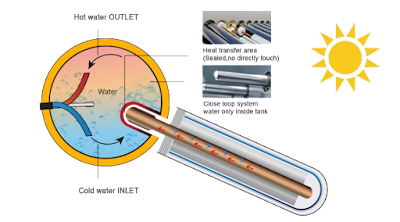- How about going about selecting a suitable water heater?
- What exactly are some water heaters on the market?
- And what are the prices?
- How about practicality and cost effectiveness?
- Which Hot Water Heater is the best ?
- Have you ever faced above problems ?
- Or even more issues, leave your comments.
Advantages and Disadvantages of Electric Heaters:
Advantages:
Efficiency: Electric heaters are generally considered more efficient than some other heating options, such as gas heaters, because they convert almost all the energy they consume into heat.
Ease of Installation: Electric heaters are typically easy to install, especially compared to more complex heating systems like central heating. They don't require venting or complex piping, making the installation process straightforward.
Portability: Many electric heaters are portable and lightweight, allowing you to move them easily from room to room, providing heat where and when you need it.
No Fuel Storage: Unlike gas heaters, electric heaters do not require the storage of fuels like natural gas, propane, or oil, eliminating the need for a fuel supply and associated safety concerns.
Clean Operation: Electric heaters do not produce any combustion byproducts, like carbon monoxide or other harmful emissions, making them a cleaner heating option for indoor use.
Silent Operation: Electric heaters are generally quiet during operation, providing warmth without noisy fan systems or combustion processes.
No Emissions: As they do not burn fuel, electric heaters do not emit greenhouse gases or contribute to indoor air pollution, promoting a more environmentally friendly heating option.
Advantages and Disadvantages of Gas Heaters:
Advantages:
Lower Operating Costs: Gas heaters are generally more cost-effective to operate compared to electric heaters, especially in areas where natural gas prices are relatively low.
High Heating Capacity: Gas heaters can provide a high and consistent heat output, making them effective for quickly heating larger spaces or in cold weather conditions.
Fast Heating: Gas heaters heat up quickly, providing almost instant warmth upon ignition, which can be beneficial for immediate comfort in colder environments.
Independence from Electricity: Gas heaters operate independently of electricity, so they can still provide heat during power outages, which can be essential in regions prone to electrical blackouts.
Even Heat Distribution: Gas heaters typically provide more even and consistent heat distribution throughout the room, ensuring a comfortable environment.
Lower Environmental Impact: Natural gas is generally considered a cleaner fossil fuel compared to coal or oil, resulting in lower greenhouse gas emissions when used for heating.
Longer Lifespan: Gas heaters often have a longer lifespan than electric heaters, especially if well-maintained.
Disadvantages:
Higher Upfront Cost: Gas heaters tend to have higher initial installation costs compared to electric heaters, particularly if additional gas lines need to be installed.
Combustion Byproducts: Gas heaters produce combustion byproducts, including carbon monoxide, which can be dangerous if the heater is not properly vented or if there are issues with the exhaust system.
Safety Concerns: Gas heaters can pose safety risks, especially if not maintained correctly. Regular inspections and maintenance are necessary to ensure safe operation.
Need for Ventilation: Gas heaters require proper ventilation to remove harmful combustion byproducts. Inadequate ventilation can lead to indoor air pollution and health hazards.
Carbon Footprint: While natural gas is cleaner than some other fossil fuels, it still contributes to greenhouse gas emissions, impacting the environment and climate change.
Limited Portability: Gas heaters are generally not portable and require a fixed gas supply, making them less flexible for heating different areas of a home or moving to different locations.
Fuel Availability: In some rural or remote areas, natural gas supply may be limited or unavailable, making gas heaters impractical.
In conclusion, gas heaters offer cost-effective heating with high capacity and fast warming capabilities. However, they come with safety considerations, maintenance requirements, and potential environmental impacts. When considering a gas heater, it's essential to prioritize safety, ensure proper ventilation, and choose a reputable installer for safe and efficient operation. Additionally, consider the availability of gas supply in your area and weigh the overall environmental impact of using natural gas for heating.












.png)





















